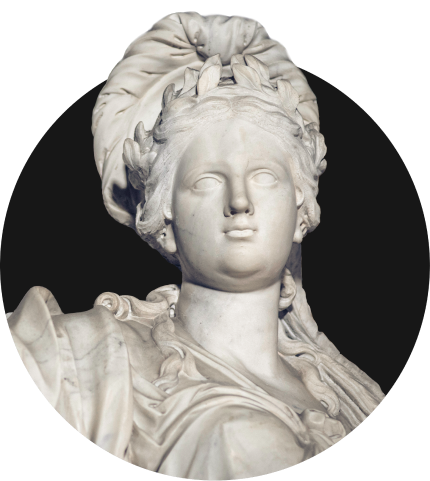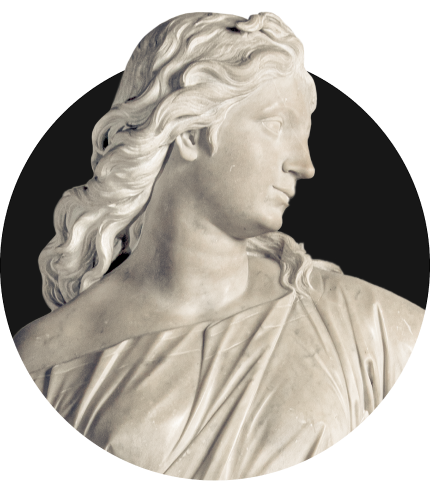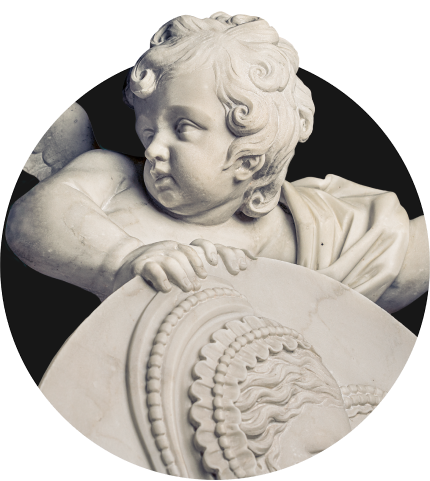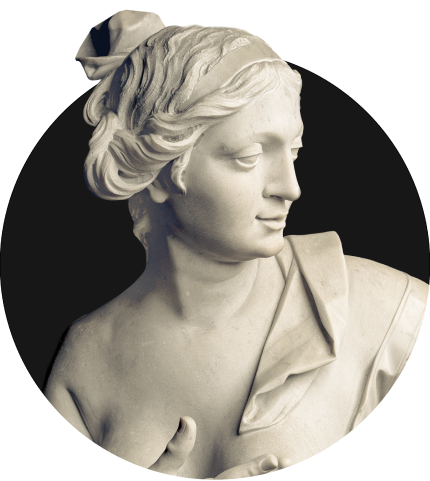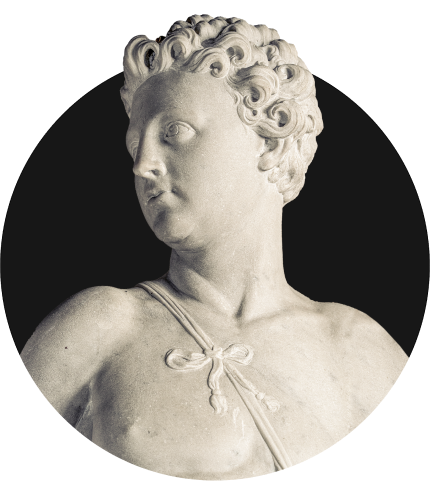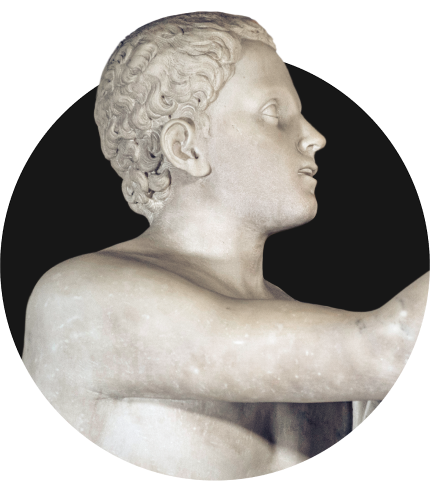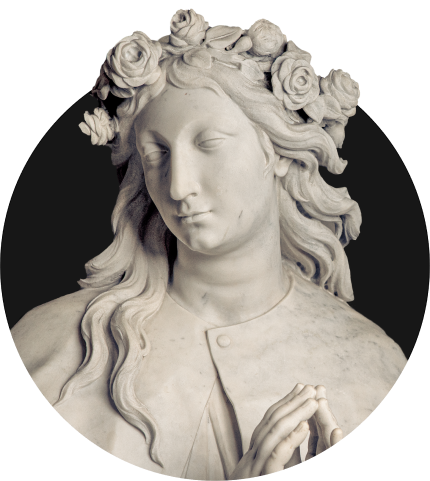
The statues
Modesty
The statues
Modesty
With the Veiled Christ and Disillusion, Modesty makes up the triad of artistic excellence in the Sansevero Chapel, as sanctioned by travellers, guides and art historians since the seventeen hundreds. Raimondo di Sangro dedicated the monument to the memory of his “incomparable mother”, Cecilia Gaetani d’Aquila d’Aragona, who died on 26th December 1710, when Raimondo was not yet one year old.
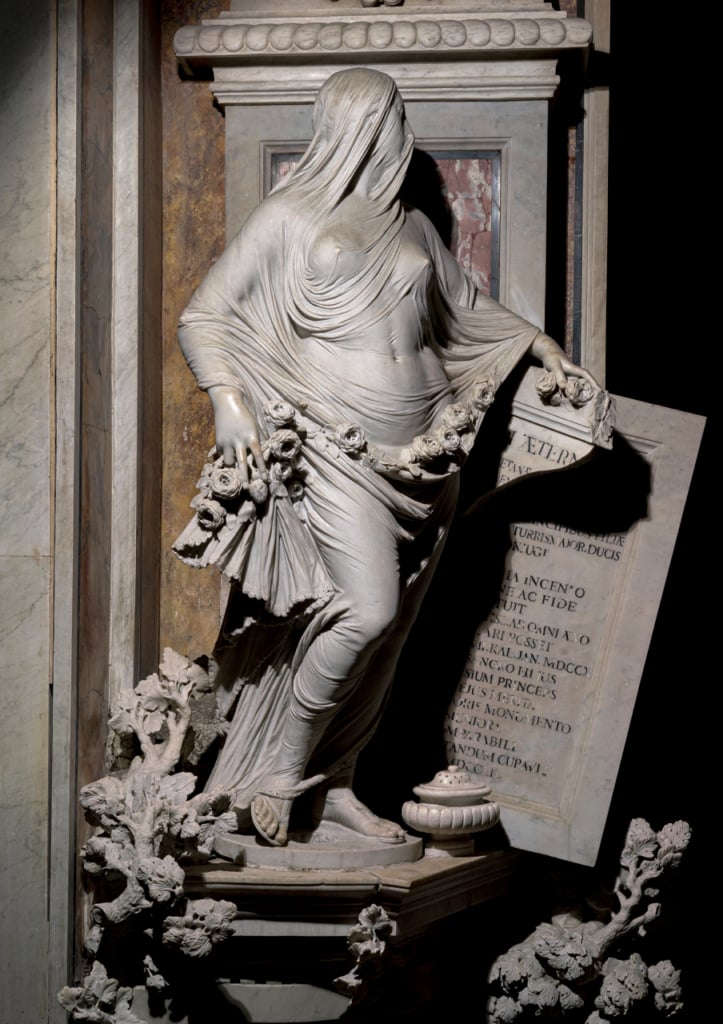
The group of statues
Modesty was completed in 1752 by the Venetian Antonio Corradini, a sculptor of European fame already in the service of Emperor Charles VI in Vienna, called by the Prince of Sansevero to be the co-designer and maker of the project for his Chapel (but Corradini, as we can see from a plaque erected by di Sangro, perpendicular to the column where Modesty is situated, died in 1752 “dum reliqua huius templi ornamenta meditabatur”).
Here, the artist, who had also sculpted other veiled figures, attains a remarkable degree of perfection in shaping the veil laid elegantly and naturally over the body of the woman, as if the vapour from incense burners contributed to dampening the impalpable layer and extraordinarily adherent to the skin, girded round with a garland of roses.
The gaze lost in time, the tree of life, and the broken plaque are the symbols of an existence cut short too soon, and express the pain of the son Raimondo, who thus wished to preserve for the future the features and virtues of his young mother.
The bas-relief on the pedestal also makes explicit reference to the Gospel story Noli me tangere (Christ appears to the Magdalene dressed as a gardener).

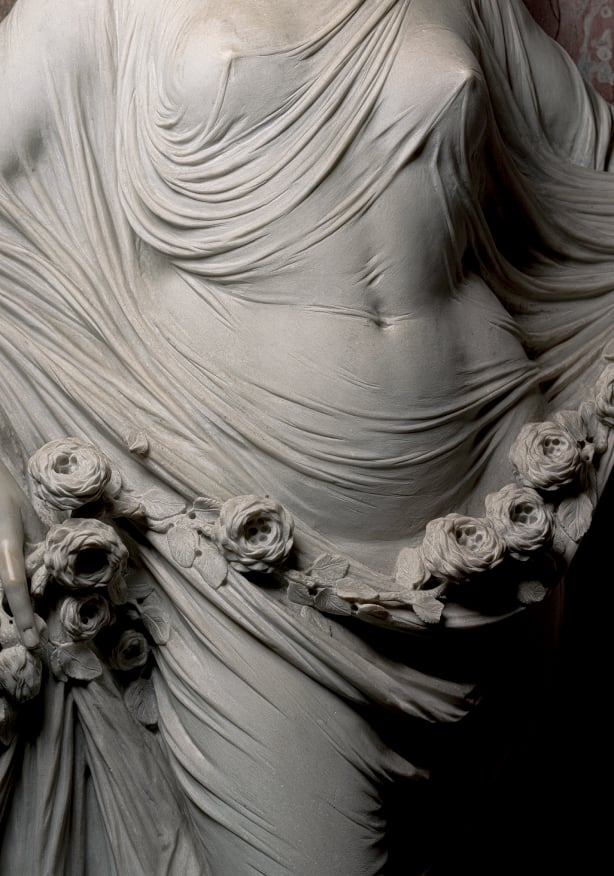

The meaning of the work
The intention of commemorating Cecilia Gaetani is not the only meaning of this statue. The veiled woman can be interpreted as an allegory of Wisdom, and the reference to the veiled Isis, special divinity of the science of initiation, appears extremely clear (without considering that a long tradition, in reality unsubstantiated, holds that Modesty is situated in the place where once a statue of Isis stood in the Greek Neapolis).
Art historians Joseph Rickwert and Rosanna Cioffi have also shown that the Veiled Truth engraved in the centre of the title page of the Encyclopédie is very similar to Corradini’s Modesty, and the sculptor’s association with Freemasonry is documented. The oak that bursts out of the naked stone, lastly, is held by some to be an allusion to the arbor philosophica.
Gallery
Map
- High altar
- The monument to Alessandro di Sangro
- Modesty
- Saint Rosalia
- The sweetness of marital yoke
- Portrait of Vincenzo di Sangro
- Religious zeal
- Monument to Giovan Francesco
di Sangro, first Prince of Sansevero - Liberality
- Monument to Paolo di Sangro,
fourth prince - Decorum
- Monument to Giovan Francesco
di Sangro, third prince - Monument to Cecco di Sangro
- Monument to Giovan Francesco
di Sangro, fifth prince - The veiled Christ
- Glory of Heaven
- Disillusion
- Saint Oderisio
- Sincerity
- The tomb of Raimondo di Sangro
- The labyrinth floor
- Self-control
- Monument to Paolo di Sangro,
sixth prince - Education
- The anatomical machines
- Madonna and child
- Portrait of Raimondo di Sangro
- Monument to Paolo di Sangro,
second prince - Divine Love








